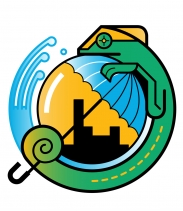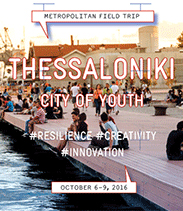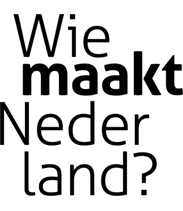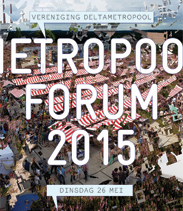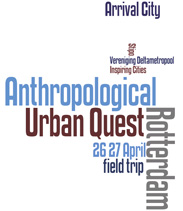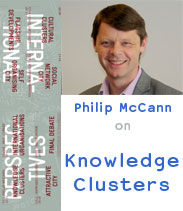The research 'Creating Innovative Production Environments' is a spatial design-testing strategy for Delft and Leiden. After a broad study of 'Gazelle firms' in South Holland, we now concentrate on the spatial behavior and movement. In cooperation with project partners Utrecht University, province South Holland, the cities of Delft and Leiden, we work towards redevelopment strategies for certain industrial clusters.

Information / downloads
| Anke Wetzel | (project manager)
| Project booklet - phase I | (final version - dec 2013, PDF)
| Report - Meeting October 7 | (PDF)
| Presentation - Meeting Oktober 7 | (PDF)
| Questionnaire - Meeting October 7 | (PDF)
| Agenda - Meeting October 7 | (PDF)
Related
| INTA 5Plus Forum |
| Programma van de Metropool | (Dutch)
Introduction
Europe’s economic and urban systems are becoming increasingly regionalized. This process of agglomeration is connected to patterns of innovation and potential manufacturing in the South-Holland area, which is seen as the economic motor for the Netherlands. But there are fundamental obstacles to the growth of the area. The current separation of manufacturing and knowledge systems do not allow for entrepreneurial, integrated, and synergistic environments to compete in global markets.
| This study will provide deeper insight in how to form innovative clusters and milieus for production activities, the networks surrounding them, and the impact of the policy and planning on different scales. |
To overcome this weakness and to understand the value potential of certain places we implement a spatial testing strategy as a tool to speculate the formation of successful clusters and innovative corridors. Seen as a starter project to form a matrix for a bigger scale project for the region, it concentrates on the location of small companies in the area around Delft and Leiden. Based on the economical study ‘Weerbare regio’, we use the concept of the ‘Knowledge Neighbourhood’ as a spatial organisation to govern the design test. Including the spatial analysis of existing industry-related clusters and their comparison to international case studies, the project will foster greater depth of knowledge and will establish links between academic research and local industries to show new ways to strengthen the regional production system.
Project focus
The focus on small scale companies and ‘Gazelles’ (firms that started small and established their position on the market for more then 5 years) therefore is increasingly important. Seen as the most flexible and innovative companies, they show the greatest opportunities to grow and to form strong new cross-over relationships between the university and local industry. After a broad study of Gazelles in South Holland, the project concentrates on spatial behavior and movement to understand their spatial requirements and choice of location.
Project summary
The proposed spatial testing strategy will serve as the basis for a broader research project to strengthen industry-based sectors in South-Holland. Within 3 months the project aims to develop a detailed project proposal for this research and consolidate a strong team of experts, architects and representatives of industries, which becomes part of a redactional board for this follow-up project. The first phase, which is an in-depth analysis of existing clusters, forms the first step to establishing links between academic research and local industries and selected companies will be invited to participate in the process.
The outcome of the spatial design test will be communicated in an expert meeting. This meeting will be open to all industry-related actors and will not only focus on the exchange of gathered knowledge but also discuss new strategies, sectors and areas for development. The outcome of the expert meeting, highlighted with diagrams, will be summarized in a publication which will be sent out to all involved experts and industrial actors of the area.
Research questions
The main questions for this first spatial test are:
Where do innovative clusters appear? How are they organised and what is their relationship to other clusters, institutions, the city and the region? If place matters in production development, what are the spatial requirements of creative milieus and is it possible to create these innovative milieus?
Research procedure
The research consists of the following steps:
1. Apply filters on GIS based data to locate industry-related clusters
2. Diagrammatic mapping and more detailed understanding of choice of
location through questionnaire
3. International case studies and their comparison
4. Involvement of selected partners and actors for an open discussion in an
expert meeting
Step 1. Apply filters on GIS based data to locate industry-related clusters
This starting test will concentrate on the small companies (‘Gazelles’) in the Delft and Leiden area. Based on research data from the ‘Weerbare Regio’, showing job-related data on the employment and sector relation of companies from 1995 up to now, it is possible to locate different firms, their sector and employment. By applying three filters on the job data we narrow it down and look at the different clusters in more detail.
The three starting test filters are:
- choice of area: Leiden and Delft and 15 km radius, both university towns with
embedded local industries
- small firms (Gazelle) which are longer established then 5 years: these
companies are most aware of choice of location
- companies which are related to the university and industrial sectors - not
service related
This explorative study will leave us with a small selection of innovative clusters and firm locations, which can be further investigated in terms of their spatial organisation. A cross-over comparison with data on patents and spin-offs from the university could give further insight into the innovation and potentials of the different clusters. An additional explorative study, with companies established more than 5 years ago, could give further input about qualities of starting grounds for small companies and interests/demands regarding new locations.
Questions regarding locations for firms:
- To what regional and local characteristics are the companies attached?
- Which types of firms (size, sectors, innovation potential) move where?
- How do spatial characterics relate to this?
- How do firms start, what do they want around themselves?
- Which places are more of an incubators than other places?
Step 2. Diagrammatic mapping and more detailed understanding of choice of location through questionnaire
The second stage of the project will be aimed at the spatial conditions of productive milieus, their organization and spatial differences, and the question of future formation and replication on different locations. Based on the selection of the first step, the focus will be on the different types of milieus of the selected clusters and on how firm dynamics are related to these milieus.
This study will be divided in two parts which will be approached complimentary: a questionnaire and diagrammatic illustration of spatials relationships. These steps will result in a matrix describing how innovative milieus start to form and the reason for their formation in different locations. It will give first insight in the interrelationships between clusters and the spatial requirements which are important for the choice of location. This matrix will form the base for further comparison in international case studies and for further spatial tests.
Step 3. International case studies and their comparison
In order to understand trends in different industry-related sectors and their spatial transformation within the urban region and in the cluster itself, the comparison with international case studies is an important step for further testing. Based on the selected sectors from the first step, a quick explorative study of similar clusters in other international areas will help to understand differences and potentials. Quick sketches illustrating the organisation based on the concept of the ‘Knowledge Neighborhood’ will demonstrate the differences and potentials for the different Dutch clusters.
The final selection of case studies will take place after the selection of the first step. Based on the selected sector, cluster size and cluster location, it is important to make the right selection for successful comparison. So far the focus may well be on biotechnology and chemical industries in Leiden/Delft/Rijnmond, as this comprises the backbone of the modern Zuid-Holland high-potential economy. Other candidates may be ICT industries (The Hague, Delft) or bio-related agriculture (Westland).
How to find related case studies in other areas? Economical and interactive maps, like ‘Selected global biotechnology and bio-science cluster’ will help to quickly locate relevant clusters and analyse them in more depth. Furthermore, a selection of successful international regions comes to mind, which we might explore further:
- Grenoble
- Oresund region (Copenhagen / Malmö)
- Düsseldorf-Köln-Bonn region
- Antwerp-Ghent region
- Lyon
The studies | Towards Industrial Urbanity | and | Exploring the Knowledge Neighbourhood | undertaken at the Architectural Association in London, provide us with several upgraded typological examples to understand the trends in certain industrial sectors. Possible examples to explore are:
- Cheswick Park, London - new design of business parks
- Singapore North One - a new concept to design science cities
- RBB Power station, Brussel - mix-use typlogy with industrial production
- Puls 5, Zurich - redevelopment of industrial areas
The spatial analysis of international case studies and comparison to the Dutch clusters will form the basis for a short strategical study. By applying the gained diagrams, quick sketches will show the potentials and upgrading possibilities of the selected Dutch clusters.
Step 4. Involvement of selected partners and actors for an open discussion in an expert meeting
The diagrams, matrix and international examples will be the basis for an expert meeting and open discussion. The goal of the meeting is to get potential developers, architects and certain industries as well as future partners together and to discuss the outcome as well as future steps and areas of research.
Content of the expert meeting:
1. Current situation - spatial requirements and policies in selected clusters
2. Possibilities for upgrading existing clusters and international examples
3. What are the problems regarding policies?
4. How to form stronger corridors in relation to infrastructure?
5. Which sectors and areas are most suitable for further testing?
6. Which other international case studies are desired for further study?

Urban services and knowledge (yellow, red) / Industry and production (green, blue)
Outcome and Project Strategy
To find the right strategy for the region of South-Holland and to understand the tools for strenghtening the already proposed knowledge axis along Delft-Leiden and Rotterdam, our spatial analysis will start on the micro scale by analysing the relocation of innovative small firms in the area around the knowledge cores of Delft and Leiden and propose new ways for possible future economic growth.
The analysis of ‘Weerbare Regio’ demonstrates several potential sectors and possible innovation environments, but the first spatial test on the relocation of small companies is particularly interesting because their location choices are so explicit. This research is a concretisation of former work by Association Deltametropolis, with the goal to contribute to a bigger study of spatial design testing and the development of regional strategies for innovative cluster and corridors. It serves as a first test to define a method that can be replicated to other sectors or bigger industrial complexes with the goal of helping planning and policy in the Dutch metropolis for future economic stability and growth.
Already undertaken studies by the Deltametropool Association focus on the current situation of knowledge and industrial clusters around Leiden and the Stedenbaan project will hereby be additional helpful background information. The project will also give insight into how innovative clusters are located and if they can be made and planned. Too often in studies industry-based clusters are seen as a given, and therefore these studies only focus on better connectivity and integration.
| This study will provide deeper insight in how to form innovative clusters and milieus for production activities, the networks surrounding them, and the impact of the policy and planning on different scales. |
The research | Exploring the Knowledge Neighbourhood - towards a new Nodality for Cambridge | and | Towards Industrial Urbanity - London Lower Lea Valley | undertaken at the Architectural Association, will serve as good methodological counterexamples for new ways of spatial analysis and illustration of complex interrelations on different scales (local, regional, international).
How to participate
Are you interested in participating in this project? Do you have interesting data, or do you want to know more about your specific cluster(s)? Please contact us via | anke.wetzel@deltametropool.nl | (project manager).
Project partners
The New Planning is a collaborative research project between Deltametropolis Association and TU Delft. A consortium of academic, civil society, government and market sectors is being created to meet the urgent need for a new model of strategic spatial planning that will keep the Netherlands at the forefront of territorial governance.

 Archief
Archief












